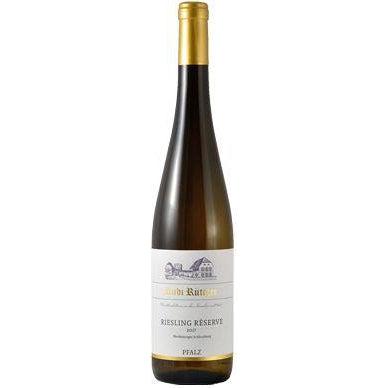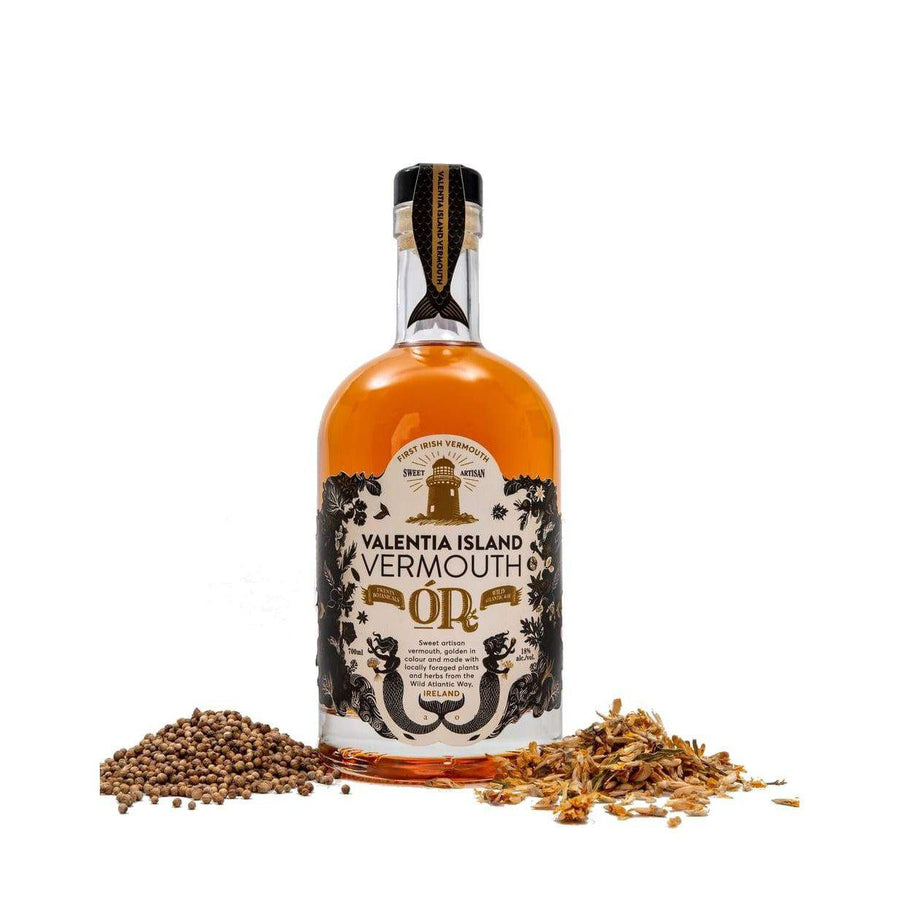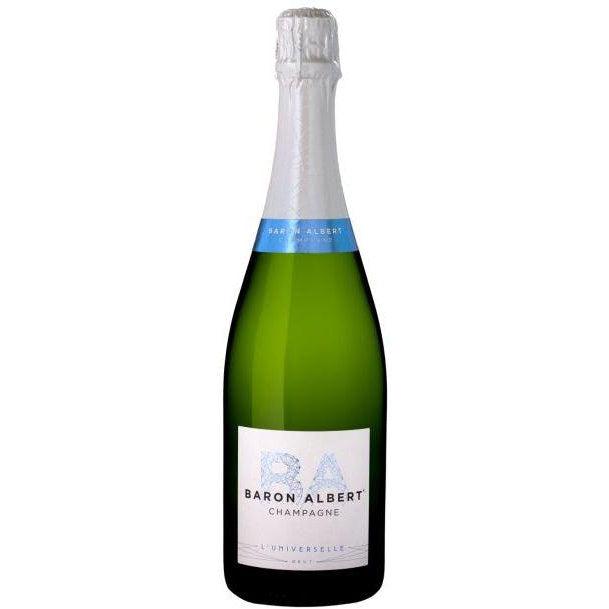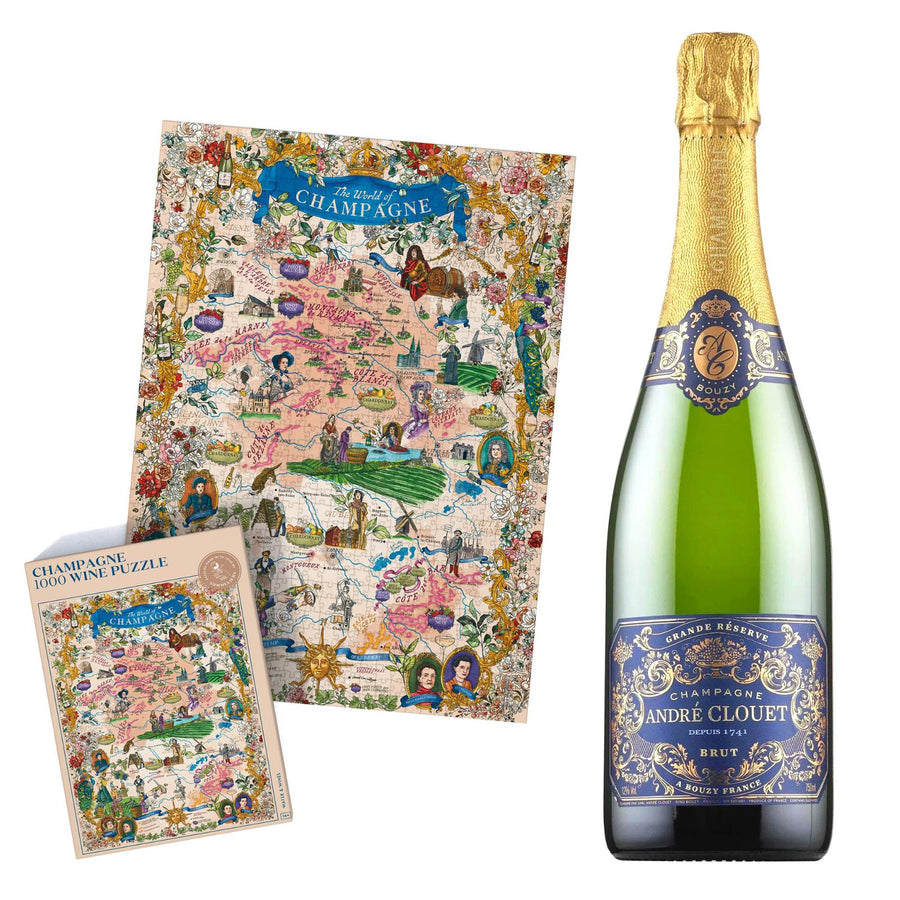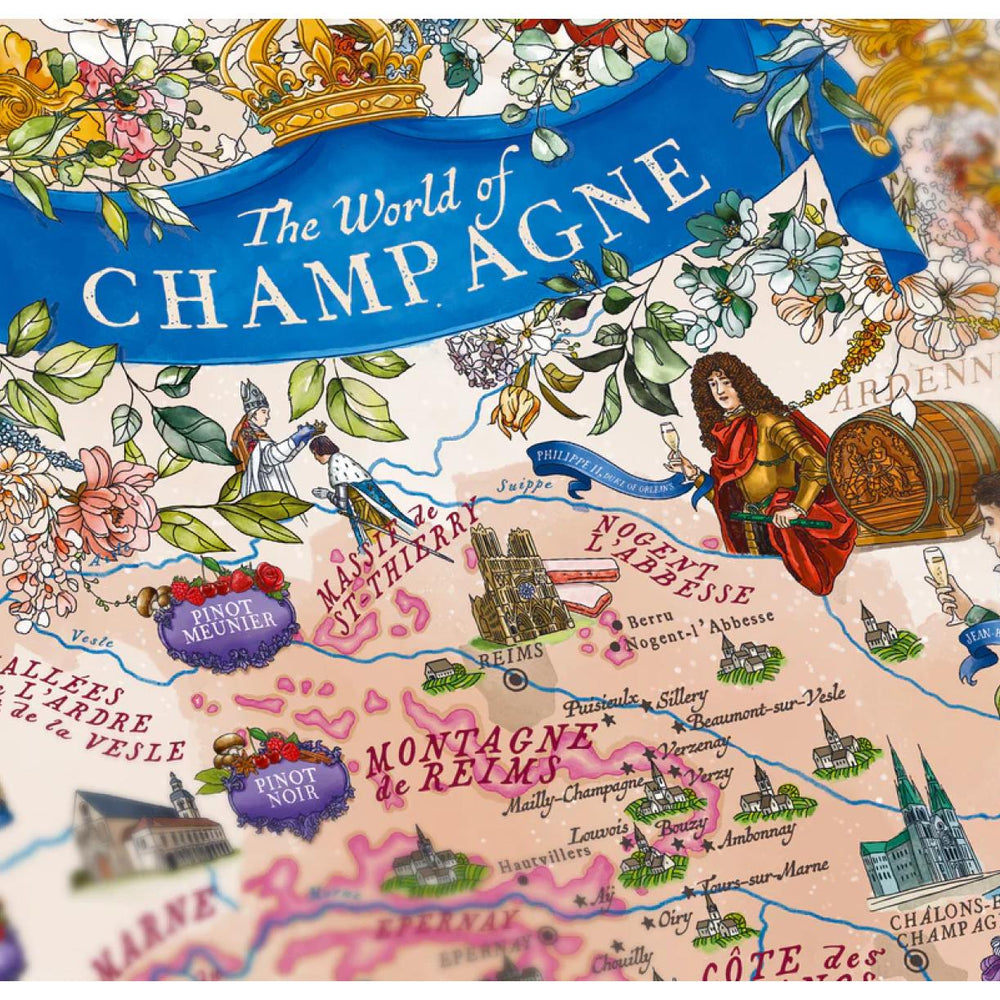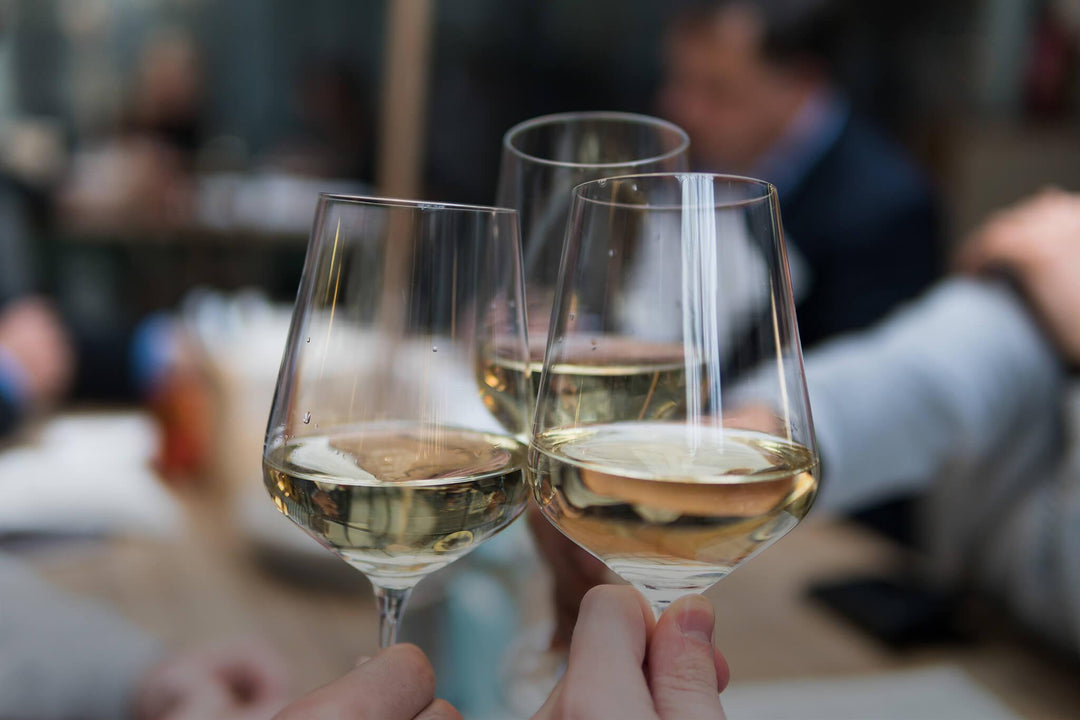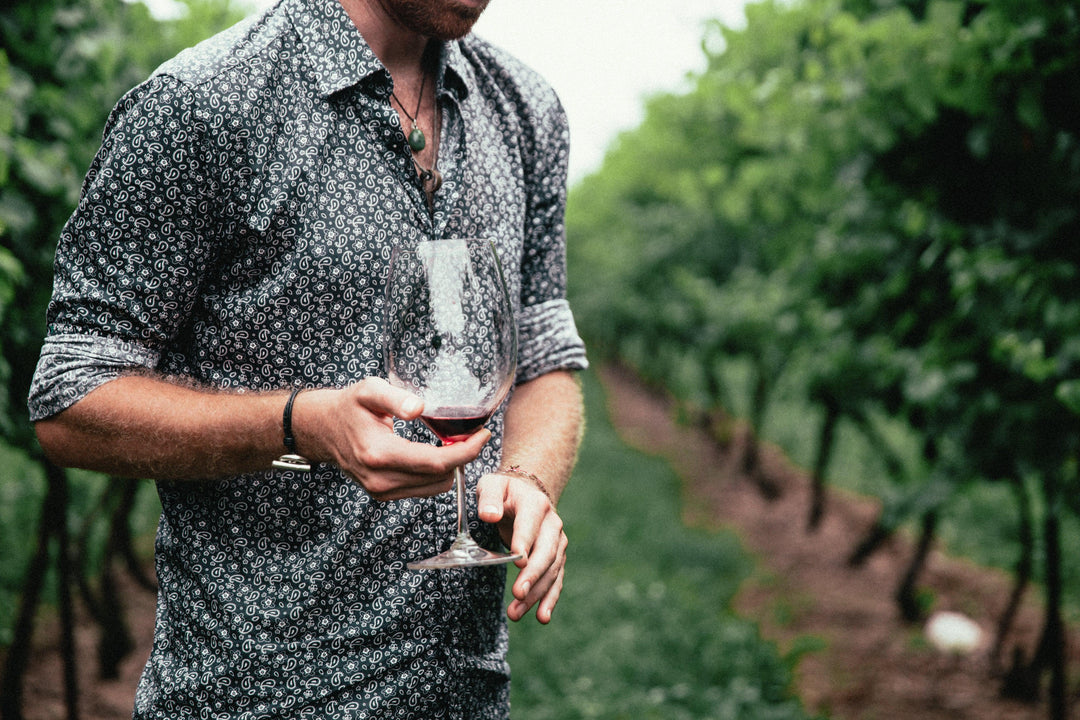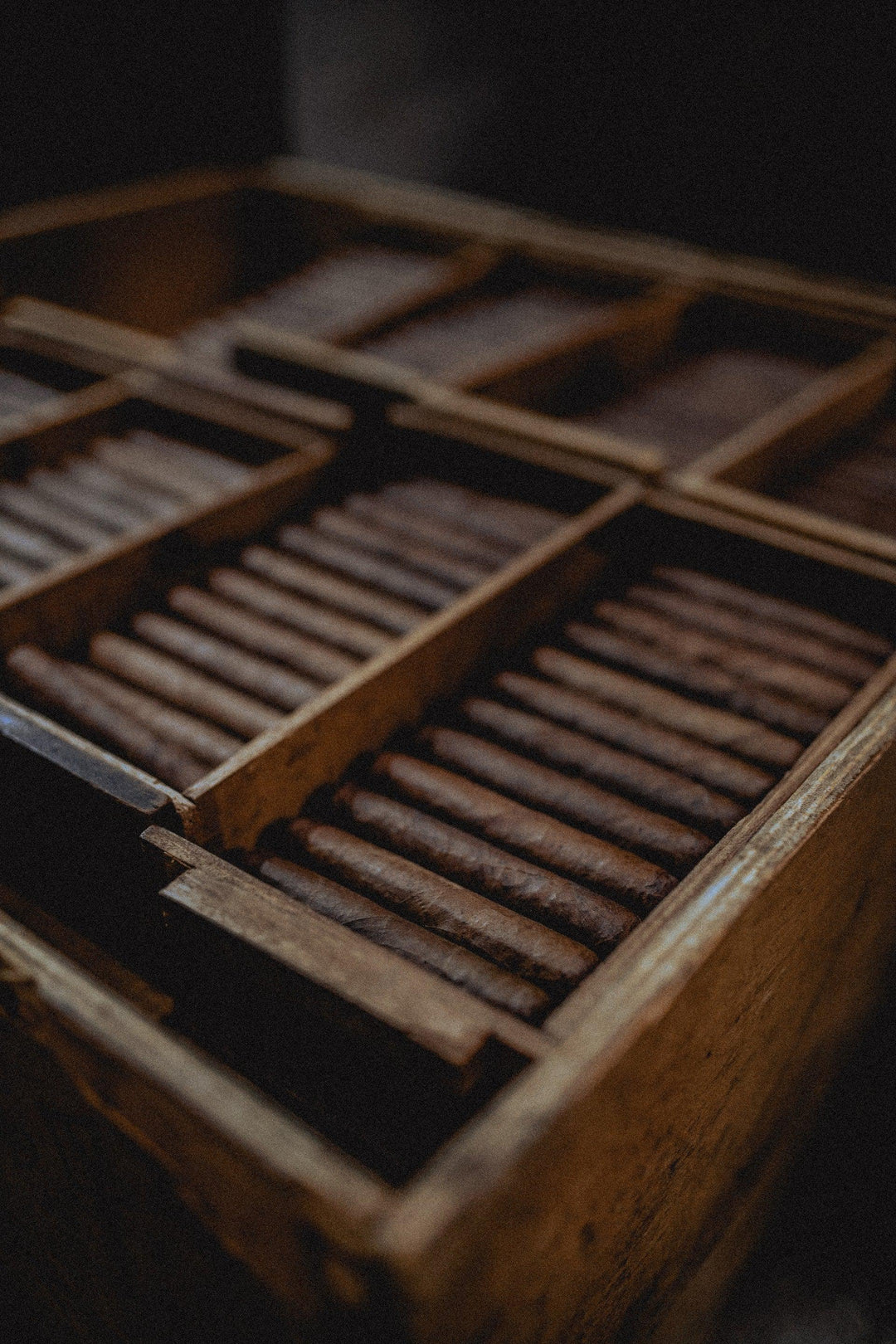UPDATE 28/09/2017:
Bodega Granbazán has been acquired by Bodegas Baigorri in Rioja.

“Every prince has his palace” Bodega Granbazán
A palace of Albariño: Bodega Granbazán
Bodega Granbazán is the winery in Galicia that makes our delicious Albariño Etiqueta Verde, and two rather rarer bottlings of Albariño, the lees fermented Don Álvaro and the oaked Limousin, which we also stock in small quantities. If you were at our Albariño tasting in Cork last year, when Jesús Alvarez Otero, the CEO of Agro de Bazán, visited Cork, you'll have been able to appreciate the balance and purity of these very elegant white wines from the Salnés Valley. They are the perfect match for the abundant seafood that is part of the daily diet along Spain's northern Atlantic coast: dry, mouthwateringly brisk, and often with just a hint of salinity in the finish.

A bunch of beautifully healthy Albariño grapes at Granbazán
Festivals and holidays
The winery is just a few miles inland from the town of Cambados, home of the annual Albariño festival and the place especially associated with the dry, seafood-friendly wine that has brought the Rías Baixas region vividly to the attention of the world's wine drinkers. The festival takes place in summer, and has expanded from a single day of celebrating all things Albariño to the best part of a week. A pity, then, that my Galician holiday ended just a few days short of the 2017 launch, but it did give me a chance to visit the Granbazán bodega without feeling that I was imposing too much.
In case wine isn't your thing, this might be the place to mention that the Rías Baixas was a very good place indeed for plain old loafing, eating informally and well and general light touristing. Recent research suggests the Irish came from Galicia long, long ago, and it wasn't only the Irish members of the party who found it easy to feel at home, once you got used to the brightness and warmth.

Life's a beach in Galicia
The scenic route
It's a challenge to grow Albariño successfully, especially in a relatively damp and misty part of the world such as Galicia, which meets the Atlantic in a fringe of deep inlets or rías, which give the Rías Baixas region its name.

Pergola trained Albariño vines at Bodega Granbazán
Even in the height of summer, temperatures don't get very high, and the rías naturally trap any humidity. The coastal influence on the Salnes Valley thankfully keeps frost at bay, mostly, but the tendency for misty moisture to linger means that training the vines on pergolas, so that air can circulate above and beneath the grapes as they grow and ripen, is really the only approach to take. A bit of altitude helps, too, and we climbed steadily from our day in the city of Pontevedra—if you go, don't miss the museum, which I'll definitely return to if I'm back in the neighbourhood—up the valley to the distinctive turquoise and white bodega, which looks out towards the ocean and is surrounded by those pergola trained vines.
Welcome to Bodega Granbazán
I'd been in touch with Jesús in a desultory way once I knew we might be travelling to Galicia. There was always a chance I might find some time to visit the bodega, and in any case I wanted to ask for local recommendations before travelling. Planning, don'cha know. In the event, we didn't meet this time: he is single-handedly responsible for bringing the Albariños of Agro de Bazán to a thirsty planet, and that means a lot of travelling.
However, the amiable Carolina, Jesús's cousin, was the one who met us, welcomed us to the winery and showed us round. By now the tour is second nature to her, because Carolina's job includes managing all kinds of wine tourism visits, from visiting importers to crowds from cruise ships to happy couples who have chosen the winery for their wedding reception.
A little history and a tour of the winery
In keeping with the so bracing! salubrious freshness of the Granbazán wines, the winery itself is squeaky clean. In hotter climates it's often necessary to harvest in the wee small hours to capture every last bit of freshness in the fruit, but in Galicia cool temperatures and lively acidity aren't a problem.

Stainless steel vats, clean as a whistle

Albariño Limousin maturing quietly in the cellar at Bodega Granbazán
Carolina and Jesús's uncle, Manuel Otero Candeira, was a pioneer in Galician wine in many respects, taking it to new heights of quality and consistency by planting the best clones of Albariño and establishing a commercial, scientifically ambitious winery, when production had previously been mostly at a domestic, smallholding level. Most Albariño is vinified in stainless steel, without the use of any oak; but in another initiative, Granbazán made the first Albariño wine in the region to be matured in French oak. We have a precious few bottles of this scarce luxury, the Granbazán Limousin in stock from time to time. It's a real treat for fans of rich white wines.
Because Agro de Bazan was involved in the tinning and distribution of the local seafood before evolving into a wine business, there are one or two items in the company's portfolio that aren't wine. There's still a bit of tinned fish; locally made preserves; and some handsomely presented spirits, including the local fire-water orujo bottled in porcelain statuettes of Spanish monarchs.

Here's a health unto Their Majesties
Bottling and labelling: the business end
Seeing where the wine is bottled and where the bottles are corked and labelled might not be the highlight of everyone's visit, but it's pretty interesting when you're handling the finished product most days. For this reason I bring you photos of corks and of labels, and of a pallet of Etiquta Verde waiting to be collected:

The very ones that go into the Etiqueta Verde

Labels for the delicious Etiqueta Ambar, waiting to be affixed

Safe behind bars, boxes and boxes of lovely Albariño Etiqueta Verde
The proof of the pudding—some samples
It's no good going round a winery and then not sampling the wares, so we opted to try two wines that currently are not imported by Bubble Brothers, so as to take the edge off the busman's holiday feeling. Agro de Bazán also owns a property in Spain's south-east, Más de Bazán in the Utiel-Requena DO, and in addition to the very popular Más de Bazán Bobal, which we do have in stock, the estate yields a deliciously fruity, precise and refreshing rosé. It was a very great pleasure to taste this on a hot day, and agree with Carolina that rosé wines really should be more popular. In Galicia, white wine dominates, and in Ireland, people just don't go for pink until the tarmac is actually bubbling with the heat—and we all know how often that happens.
Annyhoo, our other taste was of a wine that Granbazán considers its flagship, and has no difficulty in finding eager consumers for: the Albariño Etiqueta Ambar. It's made entirely from cool-macerated free-run juice and given some lees aging to bring out complexity and add depth. It's remarkable stuff altogether, the crème de la crème of Albariño.
We took a bottle of each away, to devour.
On the road again
That was the tour. Bye-bye, Bodega Granbazán, hasta la v. and what-not. Thanks, Carolina, and thanks, Jesús. Lovely people and fantastic wines, even by the high standards of the Rías Baixas. Try a bottle or two from us, if you haven't already, and you'll see what I'm on about: Albariño Etiqueta Verde 2016 has just arrived in Cork.

Steely, peachy, fresh as a sea breeze
If you fancy a trip to Albariño country, you could do worse than have a word with Marcos, the owner of the house we stayed in. Because we dealt direct with him, there was no way to add a review to any of his listings, so I thought I'd mention him and his patient, helpful hospitality (we arrived really late at night (delayed) and left at an unfriendly hour of the a.m.) here.
 “Every prince has his palace” Bodega Granbazán
“Every prince has his palace” Bodega Granbazán A bunch of beautifully healthy Albariño grapes at Granbazán
A bunch of beautifully healthy Albariño grapes at Granbazán Life's a beach in Galicia
Life's a beach in Galicia Pergola trained Albariño vines at Bodega Granbazán
Pergola trained Albariño vines at Bodega Granbazán Stainless steel vats, clean as a whistle
Stainless steel vats, clean as a whistle Albariño Limousin maturing quietly in the cellar at Bodega Granbazán
Albariño Limousin maturing quietly in the cellar at Bodega Granbazán Here's a health unto Their Majesties
Here's a health unto Their Majesties The very ones that go into the Etiqueta Verde
The very ones that go into the Etiqueta Verde Labels for the delicious Etiqueta Ambar, waiting to be affixed
Labels for the delicious Etiqueta Ambar, waiting to be affixed Safe behind bars, boxes and boxes of lovely Albariño Etiqueta Verde
Safe behind bars, boxes and boxes of lovely Albariño Etiqueta Verde


